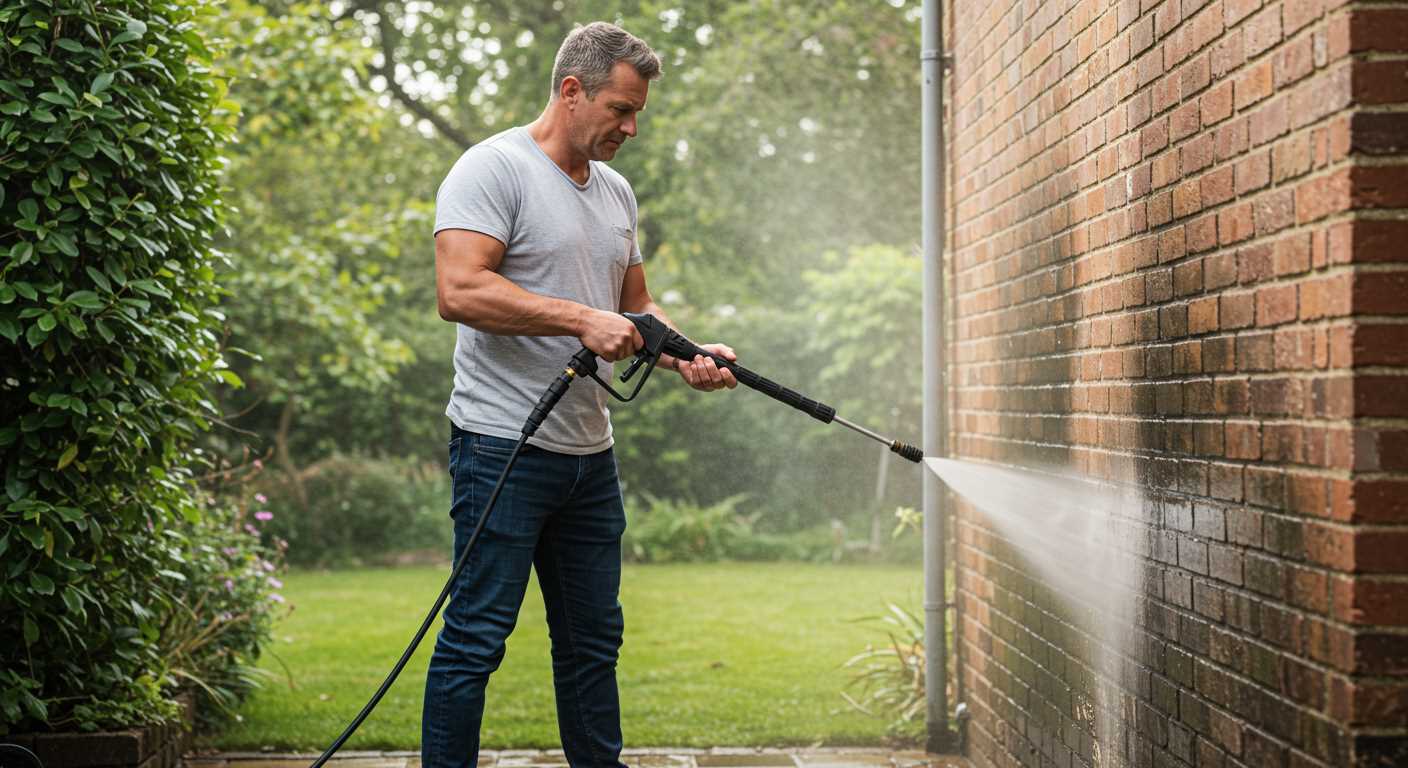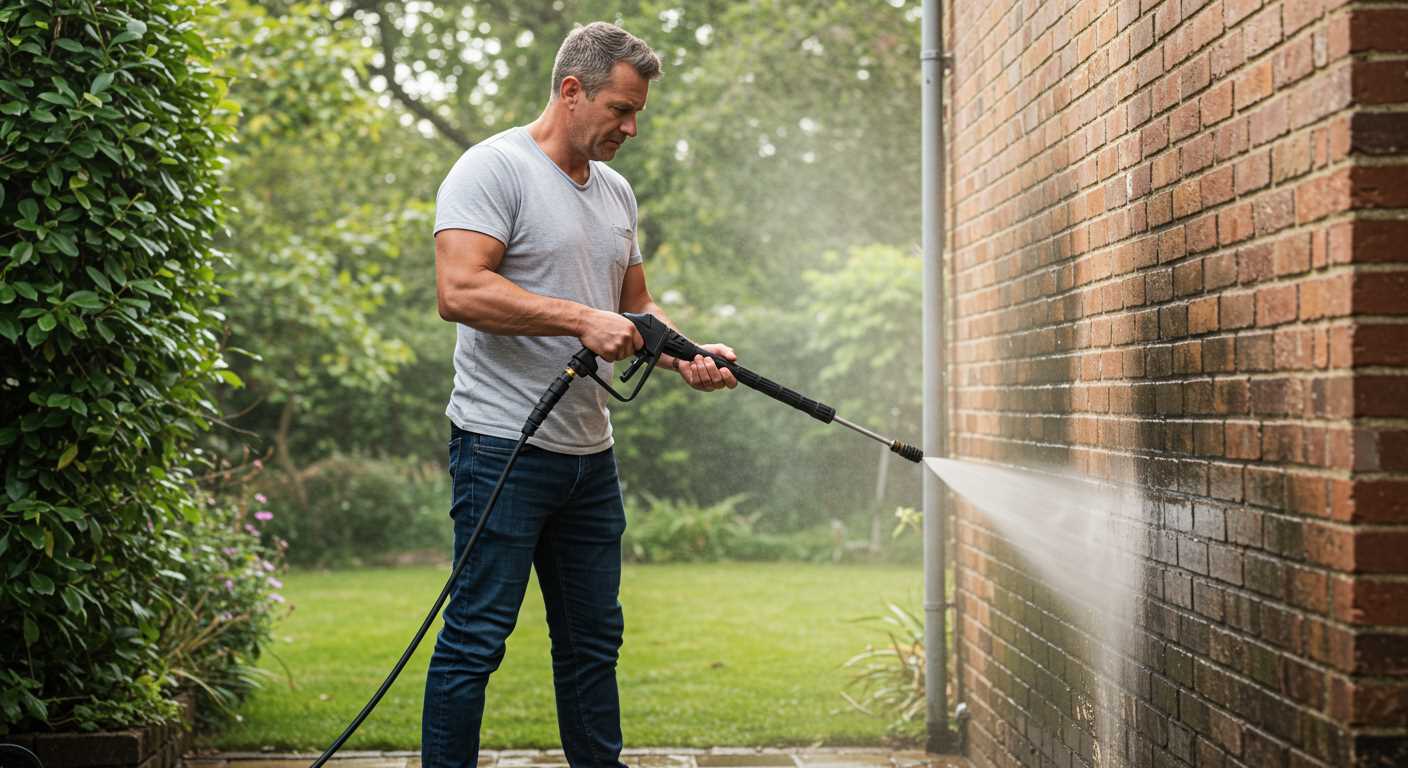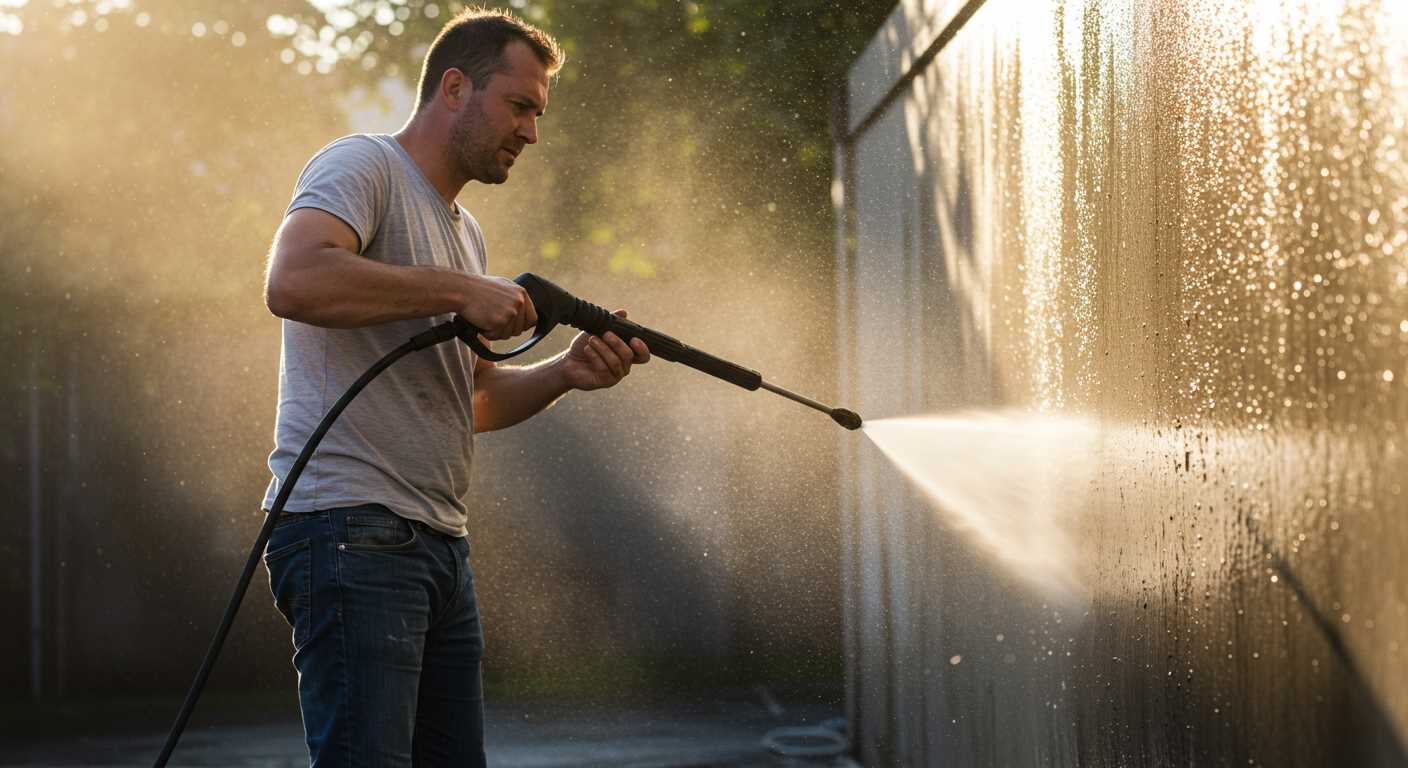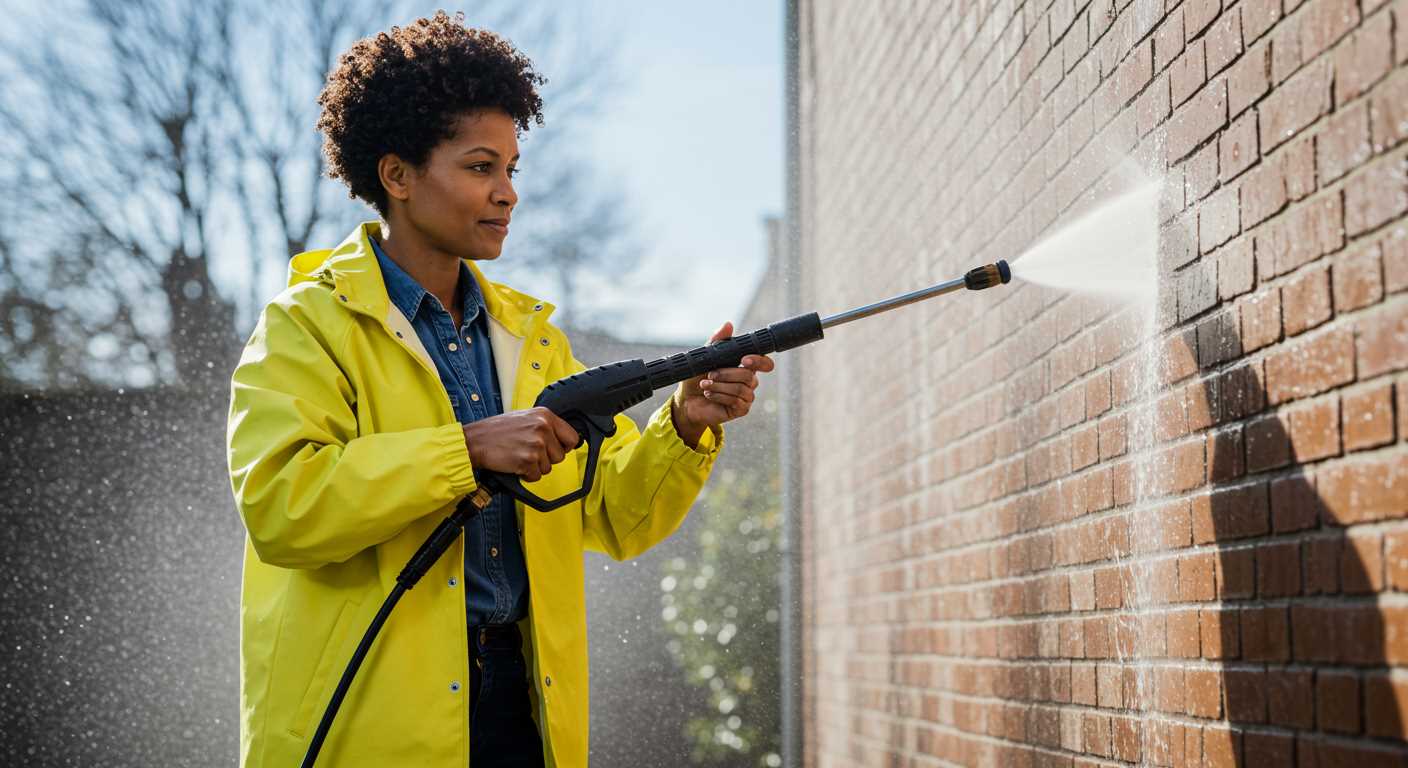




Begin by laying the coiled tubing flat on a clean surface, ensuring the area is free from debris. This simple step allows you to visually inspect for kinks or bends that may hinder flow and efficiency. Gently pull on each end of the tubing while holding the centre firmly. This action helps to release any tension built up over time.
Next, take warm water and fill a bucket. Immerse the coiled section for about 10-15 minutes. The heat will soften the material, making it more pliable and responsive to reshaping. While it’s submerged, you can occasionally rotate the coil to ensure even exposure to the warmth.
After soaking, remove the tubing and straighten it out by hand. For any persistent twists, you might employ a gentle stretching technique. Hold one end and gradually pull while keeping the other end anchored. If necessary, place the tubing in a sunny spot for a short while; the heat from the sun can further assist in eliminating stubborn curls.
Once you’ve achieved the desired straightness, secure the tubing in place with a few ties or clamps. This will help maintain its shape as it cools down. Allow it to rest in this position for several hours before using it again. Following these steps can significantly enhance your cleaning system’s performance, ensuring a hassle-free experience on your next job.
Methods for Uncoiling Your High-Pressure Cleaning Line
To resolve kinks in your cleaning line, I recommend laying it out in the sun for about 30 minutes. The warmth will soften the material, making it more pliable. Just ensure you keep an eye on it to prevent overheating.
Another technique involves gently stretching the line. Hold one end firmly and pull the other end away from it. This can help remove stubborn bends. Be cautious with the amount of force you apply; you don’t want to risk damaging the line.
Utilising Weight to Your Advantage
Using weights can also be beneficial. Attach a small weight, like a bag of sand, to the coiled section and let it hang for a while. Gravity will gradually help to pull out the kinks without applying excessive force.
Proper Storage Practices
Avoid future issues by storing your cleaning line properly. Coil it loosely in large loops rather than tight circles. Investing in a hose reel can also keep it organised and prevent tangling. Remember, proper storage is key to extending the life of your equipment.
Identifying Common Hose Kinks and Twists
When dealing with a tangled water line, it’s crucial to spot the typical bends and knots. Look for areas where the line may have crimped or bent sharply, often at connection points or when stored improperly. Common culprits include the sections near the nozzle or where the reel is located.
Pay attention to any uneven bulges along the length of the tube. These can indicate areas where the material is stressed, leading to potential leaks over time. I’ve seen many users overlook these signs, only to face issues during operation.
Another frequent issue arises from tight coils that form when the line is wound up too tightly. When unwinding, you might notice twists that create resistance. If you spot a section where the material spirals, gently uncoil it, allowing it to relax back to its natural shape.
During my years in this field, I often encountered users struggling with kinks caused by improper handling. A common mistake is dragging the equipment across rough surfaces, which can create permanent bends. Always lift the line rather than pull it to prevent this damage.
Lastly, check for any areas where the casing appears worn or discolored. This could indicate that the line has been stressed in those spots, leading to future failures. Regular inspection is key to maintaining the integrity of your equipment and ensuring optimal performance.
Tools Needed for Hose Straightening
To tackle any issues with twists and bends in your cleaning equipment’s tubing, you’ll need a few handy items. First on the list is a quality pair of gloves. These protect your hands from abrasions and prevent slipping while handling the tubing.
Next, grab a hose reel. This device is invaluable for storing the tubing neatly. It helps prevent kinks from forming during storage, making future use much easier. If you don’t have one, a simple bucket can work as a temporary solution to keep the tubing tidy.
A heat gun or a hairdryer can be beneficial for softening the material. Gently warming the affected areas can help reshape them, allowing for easier manipulation. Just be careful not to overheat and damage the tubing.
Also, consider using a spray lubricant. A silicone or rubber-friendly product can assist in easing any tight spots, reducing friction when you attempt to re-align the tubing.
Finally, a simple measuring tape helps ensure you have the correct lengths for any adjustments or replacements you might need. Keeping your tools organised and accessible will make the task much smoother.
Step-by-Step Guide to Unkinking a Hose
Begin with a thorough examination of the entire length of the tubing. Look for visible bends or pinched sections that may impede water flow. If you spot any, gently manipulate the affected area with your hands to loosen it. This initial assessment is vital for identifying the more stubborn twists that require additional attention.
Warm Water Technique
For those persistent kinks, fill a bucket with warm (not boiling) water. Submerge the twisted part of the line for a few minutes. The heat will soften the material, making it easier to reshape. After soaking, remove the line and gradually work out the kinks by gently pulling and twisting. This method has always served me well, especially on colder days when the tubing becomes rigid.
Gravity Method
If you encounter a section that refuses to yield, try using gravity to your advantage. Hang the line from a sturdy hook or a tree branch, allowing it to dangle freely. The weight of the tubing itself can help to eliminate any remaining twists. Leave it suspended for about an hour, checking periodically to see if progress has been made. This simple technique often works wonders.
Preventing Future Kinks During Use
To avoid annoying twists and bends while operating your cleaning gear, consider these effective strategies:
Proper Handling Techniques
- Avoid yanking or pulling the line sharply. Instead, gently guide it as you move.
- Keep the line laid out in a straight line before you start using it. This simple action can prevent a number of issues.
- When coiling the line after use, do so in large loops rather than tight coils. This reduces stress on the material.
Storage Solutions
- Utilise a hose reel or storage cart. These tools help maintain the line’s shape and prevent tangling.
- Store the cleaning equipment in a cool, dry place. Extreme temperatures can damage the material and lead to kinks.
- Regularly inspect the line for any signs of wear and tear. Addressing issues early can save you from larger problems later.
Remember, developing good habits during use and storage can significantly enhance the lifespan of your cleaning equipment. With a little attention, you can keep your gear operating smoothly and efficiently.
Storing the Hose Properly After Use
After using your cleaning equipment, proper storage of the tubing is crucial for maintaining its longevity and performance. Here are some recommendations based on my years of experience in the field:
-
Coil the Tubing Neatly: Always coil the tubing in a circular manner, avoiding tight bends. Loose coils help prevent kinks and twists when stored.
-
Use a Hose Reel: If possible, invest in a hose reel. This device keeps the tubing organized, reduces the risk of tangles, and makes retrieval easy for future use.
-
Avoid Extreme Temperatures: Store the equipment in a cool, dry place. Extreme heat or cold can deteriorate materials and lead to cracks or brittleness over time.
In my experience, I’ve seen many individuals overlook the importance of proper storage. Once, I visited a friend’s workshop, and his equipment was a tangled mess. Not only did it take longer to set up for the next use, but the wear on the tubing was evident. A simple hose reel could have saved him time and money.
-
Keep Away from Direct Sunlight: Ultraviolet rays can damage the materials. Store the tubing in a shaded area or use a cover.
-
Check for Damage: Before storing, inspect the tubing for any signs of wear or leaks. Addressing issues promptly prevents further damage and ensures optimal performance when next needed.
-
Secure the Ends: Use caps or tape to cover the ends of the tubing to prevent dirt and debris from entering, which can cause clogs.
One day, I neglected to check the ends of my tubing, leading to a frustrating session where I had to pause and clean out debris. That experience taught me the importance of a few extra seconds spent securing the ends before putting everything away.
By implementing these storage practices, you’ll extend the life of your cleaning equipment and ensure it’s ready for action whenever you need it.
Using Heat to Straighten a Stubborn Hose
Applying heat can be an effective way to remedy those frustrating bends in your cleaning equipment’s tubing. I recall a time when I was prepping for a big job and discovered my line was tangled in all sorts of twists. Instead of wrestling with it for ages, I decided to use a heat gun, and it worked wonders.
Recommended Techniques
Start by ensuring the line is disconnected from any machinery to avoid accidents. Set the heat gun to a low setting to prevent damage. Move it back and forth along the problematic area, allowing the material to warm up without scorching it. You’ll notice the tubing becoming more pliable, making it easier to reshape. Once the desired form is achieved, let it cool in that position. This method can eliminate most stubborn kinks effectively.
Safety Precautions
Always wear protective gloves to shield your hands from the heat. Keep a fire extinguisher nearby, just in case, as a precaution. Avoid overheating, which can lead to melting or deforming the material, rendering the tubing unusable. If you’re unsure about the temperature, test it on a small, inconspicuous section first.
Inspecting the Hose for Damage After Straightening
After getting the tubing back into shape, it’s crucial to check for any signs of damage. A thorough inspection can prevent future mishaps and ensure optimal performance. Look for abrasions, cracks, or any signs of wear that may have occurred during the unkinking process.
Key Areas to Examine
Focus on the following areas:
- Fittings and Connectors: Ensure there are no leaks or cracks at the connection points.
- Surface Integrity: Run your hands along the length of the tube to feel for any irregularities.
- Internal Blockages: A kink may have caused debris to accumulate. Check by running water through it.
Common Damage Signs
Here’s a quick reference table for identifying common types of damage:
| Type of Damage | Appearance | Recommended Action |
|---|---|---|
| Cracks | Visible splits or breaks | Replace the tubing |
| Abrasions | Worn spots or fraying | Consider replacing if severe |
| Leaks | Wet spots or water escaping | Replace fittings or the tubing |
| Blockages | Reduced water flow | Clear any debris or replace |
Regular maintenance checks can save you from costly repairs down the line. If you’re looking to enhance your cleaning capabilities, consider a pressure washer dirt blaster as part of your toolkit.
Choosing the Right Hose Material for Flexibility
Opt for a rubber or polyurethane blend for optimal manoeuvrability. These materials offer superior flexibility compared to PVC, allowing for easier handling around corners and obstacles. I’ve had a rubber hose that twisted less and remained pliable even in colder conditions, which is a significant advantage during winter tasks.
Benefits of Rubber Hoses
Rubber hoses are known for their durability and resistance to kinks, which means less frustration when you’re trying to use them. In my experience, they also withstand wear and tear better over time. I remember a time when I switched from a PVC to a rubber hose. The difference was remarkable; I could easily coil it without worrying about permanent twists.
Polyurethane Options
If you’re looking for a lighter alternative, polyurethane hoses are a great choice. They’re more manoeuvrable than rubber and often have a smaller diameter, making them easier to store. I once used a polyurethane hose during a car wash event and appreciated how effortlessly it moved around tight spaces. For those searching for a reliable source of power, consider checking out the best air compressor for car wash to complement your setup.
Maintenance Tips to Extend Hose Lifespan
Always inspect the tubing before and after each use. Look for cracks, abrasions, or any signs of wear. If you spot any damage, replace the section immediately to prevent further issues. I recall a time when I overlooked a small tear; it led to a frustrating leak during a big project.
Regular Cleaning
After each session, rinse the tubing with clean water to remove detergent and debris. Allow it to dry fully to prevent mildew and unpleasant odours. I used to neglect this step, thinking a quick wipe was sufficient. Over time, I noticed a significant difference in the performance of well-maintained equipment.
Proper Coiling Technique
When you finish using the equipment, coil the tubing properly. Avoid tight loops or kinks, as these can lead to premature wear. I learned the hard way that a loose, figure-eight coil is much kinder to the material than a traditional circle. It’s worth the extra minute to avoid future headaches.
FAQ:
What are the steps to straighten a pressure washer hose?
To straighten a pressure washer hose, first, disconnect it from the pressure washer and the water source. Lay the hose flat on a clean surface in a sunny area to help warm it up, which can make it more pliable. If the hose has kinks, gently work them out with your hands. You can also try using a hose reel or winding it properly to prevent future tangles. Additionally, filling the hose with warm water can help soften the material, making it easier to straighten.
Why is my pressure washer hose always getting tangled?
Hoses tend to tangle for several reasons, such as improper storage or winding techniques. If the hose is coiled too tightly or not stored correctly, it can develop kinks and twists. Additionally, using the hose without allowing it to lay flat can contribute to tangling. To avoid this, always wind the hose loosely on a reel or in a way that prevents tight coils. Regular maintenance and proper handling can significantly reduce tangling issues.
Can I use heat to straighten a pressure washer hose?
Yes, applying gentle heat can help straighten a pressure washer hose. You can lay it in the sun for a period or use a hairdryer on a low setting to warm specific kinks. Be cautious not to overheat the hose, as high temperatures can damage the material. Always check the manufacturer’s guidelines to ensure that heat won’t affect the integrity of the hose.
What should I do if my pressure washer hose is damaged?
If your pressure washer hose is damaged, inspect it for leaks, cracks, or punctures. Minor issues can sometimes be repaired using hose repair kits available at hardware stores. For extensive damage, it may be safer and more effective to replace the hose entirely. Ensure that you purchase a hose compatible with your pressure washer’s specifications to maintain optimal performance.








.jpg)


